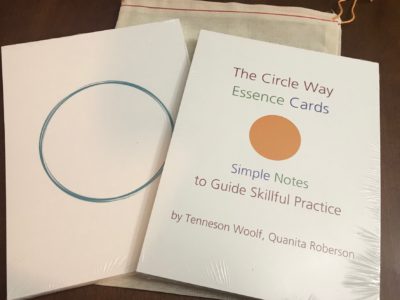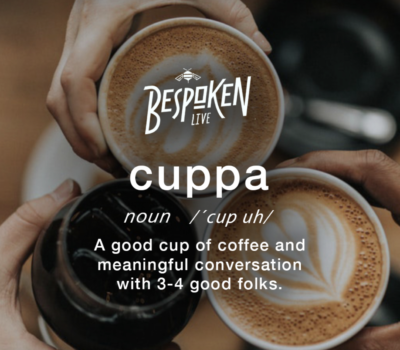
For purchases, please email me, tenneson@tennesonwoolf.com.
I’m generally the kind of human that appreciates simplicity. Not narrow and with blind eyes (hopefully not, though, garsh, I know I have that in me too). But rather, an appreciation that reaches for an essence or for deep guiding principles.
Over the last couple of months, Quanita Roberson and I have been working on this set of Essence Cards, shown above. I love the subtitle, “Simple Notes to Guide Skillful Practice.” Because in the end, whether as method or as way of being, circle is a primary container to help many of us turn to one another to be in communality. About what we love and about what perplexes and strains us in these times. What Quanita and I have done is taken simple structure, rooted in The Circle Way Pocket Guide (used with permission) and provided some of our learned simplicity about circle structure and practice. We are beginning to use them with clients and groups.
The cards were fun to make. They are now available for purchase by reaching me. There’s 26 cards in each set (see below), 6″ x 8″ in size. Full color. They come in a little cotton bag. $20 USD + Postage. A percentage of each purchase will be donated back to The Circle Way, and to another non-profit or group of people engaged in circle based change and reform.
For Canadian orders beyond North America, also contact me for special arrangements (tenneson@tennesonwoolf.com).
These cards have short descriptions, a few diagrams, and highlighted essences related to practice. We offer them with hope that they will guide and inspire helpful practice. In organizations. On teams. In community. In family. Purchase if you like. Or talk to us about use. Thx for referring others to them. To be in skillful simplicity together.
Cards:
Introduction
Contents
Welcome & Context
The Common Elements
The Circle Way Then and Now
Preparation & Invitation
Hosting The Circle
The Components Wheel
Three Practices
Three Principles
Check-In
Check-Out
Start Point & End Point
Leadership Roles (That Rotate)
Decision-Making in Circle
Creative Responses to Difficulties
Meeting Planner Using Circle
On Powerful Questions
Examples of Questions
Differences for Business
Differences for Beginners
Differences for Seasoned Circlers
Circling Online, The Technical Side
Circling Online, The Presence Side
About Tenneson Woolf
About Quanita Roberson
Additional Resources, The Circle Way
Invitation, Your Turn



